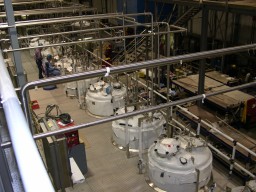Find an office location
More than 175 offices from coast to coast.
The U.S. Environmental Protection Agency (EPA) has issued a final rule lowering the National Ambient Air Quality Standard (NAAQS) for ground-level ozone contaminants from 75 to 70 parts per billion (ppb). Developed to protect public health and the environment from the effects of harmful emissions, the rule presents a complex set of implementation and attainment challenges. With an effective date of December 28, 2015, and its full impact still unclear, Terracon’s Environmental practitioners continue to monitor its development and is helping clients respond to the new regulations.

The EPA reports the new updated standards will save $2.9 to $5.9 billion annually in public health benefits by 2025, numbers that outweigh the $1.4 billion estimated cost (Environmental Protection Agency, 2015). While opposing industry groups are calling implementation of the rule too costly, the opposition also argues that the stricter standard is burdensome, unattainable, and lacks the evidence to support that it goes further to protect the public health. To date, as many of five states have joined efforts to fight its adoption.
As part of the rule implementation, U.S. states are required to recommend nonattainment designations for geographic areas unable to meet the new standards. These self-reported designations are due to the EPA by October of 2016 based on monitoring data for the previous three-year period. The EPA expects states to officially designate areas that reach attainment or nonattainment a year later in October of 2017. States out of compliance will be required to develop state implementation plans to demonstrate the regulatory steps they will execute in order to achieve compliance.
To put the regulation into perspective, the EPA has identified 241 counties across the country that are currently monitoring ozone and are not expected to be in compliance with the new, stricter standard. It’s likely that many more counties, not currently monitoring concentrations, will also exceed the permissible limits. See the EPA map here.
In order to reduce emissions of pollutants that contribute to ground level ozone, states are expected to organize stakeholder meetings and introduce state-specific regulations. These reduction efforts may extend from regulations on motor fuel composition and vehicle emissions testing, to emission limits and control equipment requirements. Enforcement will likely include adoption of an application for preconstruction permits for new and modified emission sources, and require limits or controls for emission sources not previously required under the 75 ppb standard.
Terracon is prepared to help. We have extensive experience assisting clients with preparing preconstruction permits, evaluating to determine if processes can be technically and economically 
Sources:
Wimmer, Harold P., (2015). American Lung Association Responds to EPA Ozone Standard Update, Impact on Public Health [Press release]. Retrieved from this link.
Comments to Docket ID NO. EPA-HQ-OAR-2008-069, http://www.aafa.org/media/Health-Organizations-Comment-National-Ambient-Air-Quality-Standards-March-17-2015.pdf
Environmental Protection Agency. (2015). The National Ambient Air Quality Standards, Overview of EPA’s Updates to the Air Quality Standards for Ground-Level Ozone. Retrieved from: http://www3.epa.gov/ozonepollution/pdfs/20151001overviewfs.pdf
More than 175 offices from coast to coast.